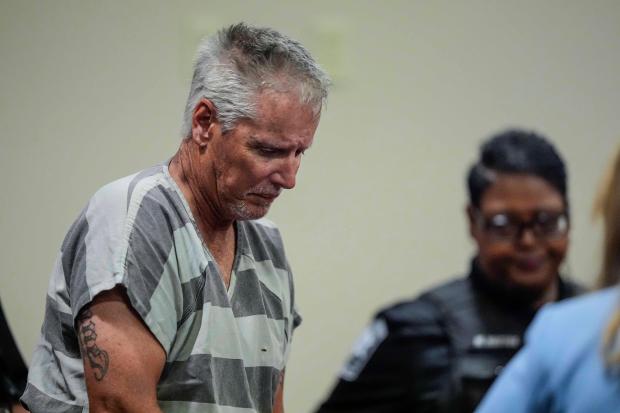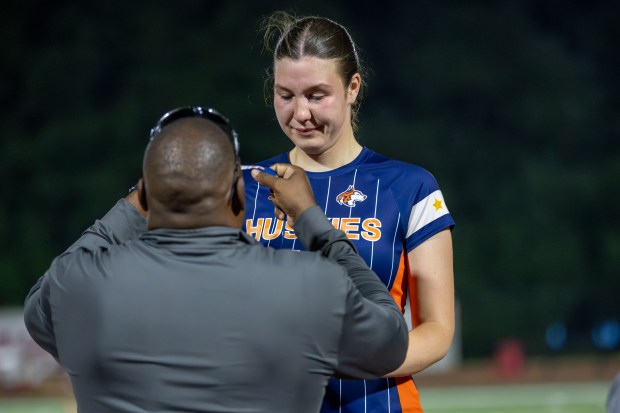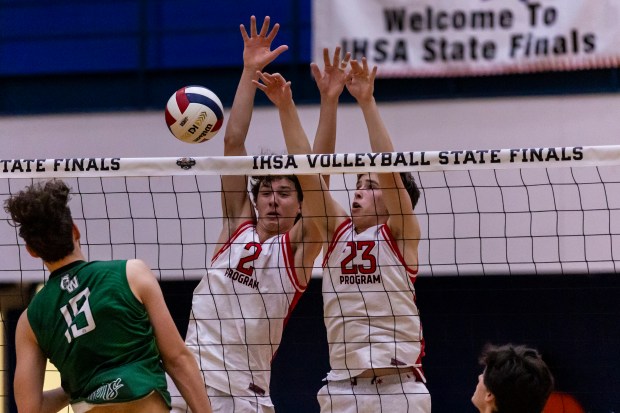See something, say something.
The community is the hero in Tinley Park, Elgin, Joliet and many other Chicago-area towns, where alert and responsive kids and adults learned of threats to their schools and quickly reached out to authorities.
“I can’t emphasize enough how important it is for the community to keep us in the know,” Tinley Park Police Chief Thomas Tilton said.
“We were made aware of the threat (to Grissom Middle School in Kirby District 140) by multiple people who saw it on the internet and either called it in or came to the police department to report it,” Tilton said. “We took the information and aggressively responded to it, working with our partners in the state’s attorney’s office and the school district.”
In addition to Tinley, over the past two weeks threats were investigated in Elgin, Glendale Heights, Richton Park, Olympia Fields, Hinsdale, Park Forest and Chicago Public Schools, causing fear, panic, emotional distress and, yes, consequences for the perpetrators.
In Joliet, two juveniles were arrested and remote learning was instituted while police investigated. In Elgin’s District U-46, two Larkin High School students in Elgin — an 18-year-old and a juvenile — were charged with disorderly conduct-threat of violence at school, a class 4 felony, in separate incidents. Another juvenile was charged with bringing a gun and ammunition into Elgin High School in a third unrelated arrest.
Is this some kind of cruel “back-to-school” initiation? Copycats trying to create panic following the recent shooting at Apalachee High School in Georgia?
Or is this, simply, our new normal?
Most of the time, thankfully, threats are just that — threats.
But you don’t know that until it’s investigated.
In the absence of serious gun legislation, in a nation overwhelmed with mental health issues and, at the same time, obsessed with weapons, the onus falls on the community to help prevent the next Uvalde, the next Sandy Hook, the next Apalachee.
There have been more than 200 schools shootings this year, according to the K-12 School Shooting Database, making it apparent that parents and students, as well as school officials and teachers, must remain vigilant in their attention to potential danger.
They need to have open, honest discussions about it. And, yes, they must tell their kids that a prank that terrorizes a neighborhood is not funny and can land the prankster on an undesirable, alternate course for life. Same for a prankster’s parents.
This is where we’re at. This is the country we live in.
Tilton said that while privacy laws prevent the police from identifying the individual(s) involved or many of the details in the recent Tinley incident, the public needs to know they play an important role in preventing a tragedy.
For years, schools have trained and prepared for how to deal with an intruder. But the recent Georgia shooting, which resulted in the deaths of two students and two teachers and injuries to nine others, reveals a new kind of danger — potential for a threat from within.
Physical barriers, such as metal detectors, could be a prevention, Tilton said. But they require a school to staff trained people who know how to respond if they find a gun. In districts with multiple schools, that can be costly.
In some cases, he said, it might be prudent, and perhaps a deterrent, to hold parents accountable if they do something that enables their child or someone else to make or carry out a threat.
And then there’s the trauma that comes from simply feeling targeted, whether the threat is fake, real or simply perceived.
Suzanne Johnson, superintendent of School District U-46 in Elgin, this week released a plea to parents: “Please talk to your children about the seriousness of their words and actions.”
Talk about feelings, she advised.
“These threats often create fear and anxiety in your child; listen and try to understand them. If your student is feeling overwhelmed or threatened, please reach out to your school administration for support.”
In addition, she said, “Explain that it is expected to be anxious and worried about your safety and your friends when a threat is made … To alleviate their fears, provide accurate information and background on events when possible. Discuss safety protocols and explain that law enforcement constantly monitors these threats to keep them safe.”
She also recommends parents “limit social media use and exposure. Heightened awareness in processing these threats can cause prolonged distress even after the threat is resolved. Help our students turn off their devices and take important breaks from social media.”
Lastly, she said, “Tell students to stop posting or sharing threats on social media. In sharing these posts over and over again, the fear that the offender wished to inflict on our students is perpetuated. Many threats we have received originated in a different state or out of the country and were posted to cause panic in a school or community unknown to the offender.”
Tilton said there are a lot of nuances to investigating these situations.
“If there’s information that’s immediately actionable, if we can say to the person, ‘We have to take you into custody,’ we’ll do it immediately. And we’ll inform the state’s attorney’s office and all of the stakeholders in this process,” he said.
But maybe the threat was posed by someone who had access to another individual’s photo or device, he said.
“We have to make sure we identify the real threat, the right threat, the one that’s actually happening, and not the one that looks like a threat,” Tilton said.
“We have to keep everybody safe,” he said. “At the same time, the people involved have rights.”
Parents need to have conversations with kids, he said, and let them know they have to be careful with what they message and who they allow to access their devices.
“Social media definitely adds to unease when these circumstances happen,” Tilton said. “(A threat) seems to take off, and there’s a lot of anxiety and anger that comes out of a threat. People react very strongly on social media, but that’s really unhelpful. We have to be very careful about how we message this without creating a larger disruption.”
Instead of sharing the information across social media platforms, adding to everyone’s anxiety, bring it to the authorities, he said.
“We are going to do everything we can as soon as possible to identify and mitigate a potential threat,” Tilton said. “Everyone can help us by making us aware as soon as they become aware.”
Donna Vickroy is an award-winning reporter, editor and columnist who worked for the Daily Southtown for 38 years. She can be reached at donnavickroy4@gmail.com.





